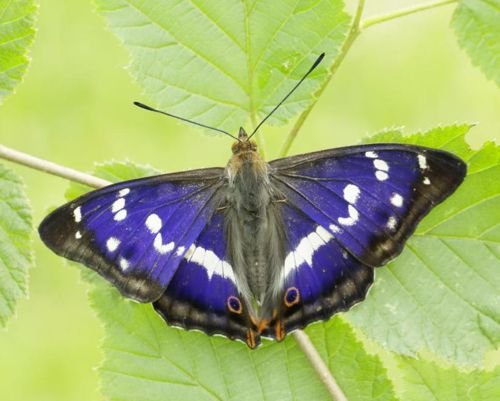Purple Emperor Butterfly
Scientific Name: Apatura iris
Order & Family: Order: Lepidoptera, Family: Nymphalidae
Size: Wingspan typically ranges from 65 to 70 mm (2.5 to 2.8 inches) for males and 75 to 80 mm (3.0 to 3.1 inches) for females.

Natural Habitat
The Purple Emperor butterfly typically inhabits mature deciduous woodlands, particularly those with good growth of sallow (willow) and aspen trees which are vital for their larval development. They prefer sunny glades, rides, and forest edges, where males establish territories high in the tree canopy.
Diet & Feeding
Adult Purple Emperor butterflies primarily feed on aphid honeydew, tree sap, and decaying organic matter such as animal dung, carrion, and urine, rather than nectar from flowers. This unusual diet provides them with essential nutrients and minerals. Caterpillars feed exclusively on the leaves of Sallow (Salix species) and Aspen (Populus tremula).
Behavior Patterns
Males are highly territorial and often perch on high points like tree canopies to survey their territory and spot rivals or potential mates. They are known for 'puddling' where they gather on damp ground to extract moisture and minerals. Both sexes can be seen basking in the sun to regulate body temperature. The caterpillars feed on the leaves of host trees and pupate on the underside of leaves or twigs, blending in with their surroundings. Adults are strong fliers and can be quite elusive.
Risks & Benefits
Potential Risks: There are no direct risks to humans. Their population is sensitive to habitat loss and changes in woodland management practices. Benefits: As part of the ecosystem, they contribute to nutrient cycling through their unique diet. They are also an important indicator species for the health and biodiversity of mature deciduous woodlands. Their presence signifies a healthy and established woodland ecosystem.
Identified on: 8/16/2025